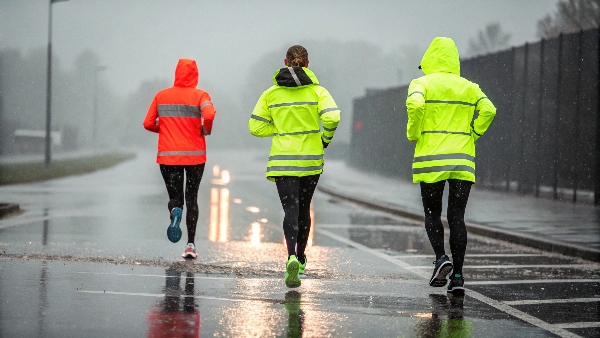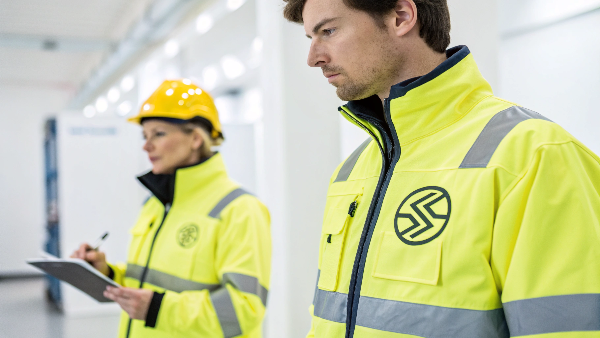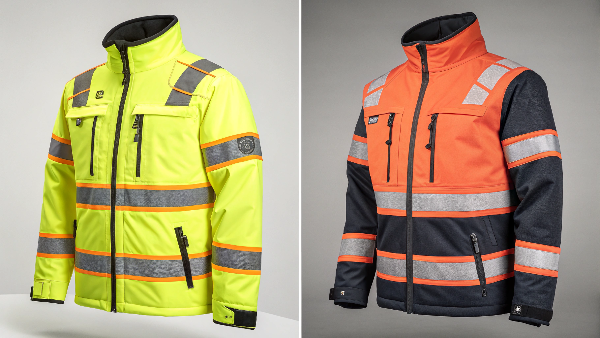Dark roads are risky. A sudden breakdown puts you in danger. High-visibility jackets make you seen by other drivers, preventing accidents.
Wearing a high-visibility jacket when you get out of your car, especially during breakdowns or emergencies, dramatically increases your visibility to other road users. This simple precaution helps prevent tragic accidents by making you noticeable from a distance, day or night.
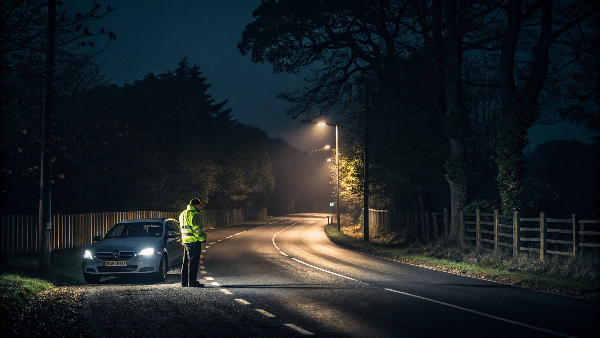
It's such a small thing to keep a hi-vis jacket in your car. But the protection it gives you if you ever have to stop on a busy road is huge. I’ve heard stories from clients, like Danny Cheng who distributes PPE in North America, about near misses that could have been avoided if a driver who had broken down was more visible. Let's explore more why these jackets are so critical.
What is the purpose of a high-visibility jacket?
You feel unseen by traffic. This is a dangerous situation. A high-visibility jacket1 makes you stand out, keeping you safe.
The main purpose of a high-visibility jacket is to make the wearer clearly noticeable in all light conditions. It uses bright fluorescent colors2 for daytime visibility and retroreflective tapes3 for nighttime, significantly cutting down accident risks.
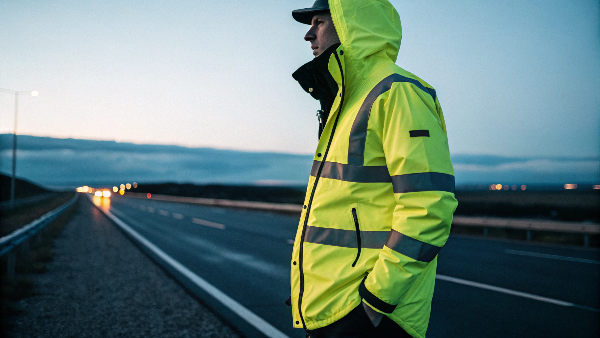
At Vissafety, we've been making high-visibility clothing since 2007. The core idea is simple: be seen, be safe. Think about it. When a worker is near moving vehicles, or when a driver has to step out of their car on a highway, they need to be instantly recognizable. Our jackets are designed to meet global standards like EN ISO 20471 in Europe and ANSI/ISEA 107 in the US. These standards specify the amount of fluorescent material and reflective tape needed. The fluorescent material reacts with UV rays from sunlight, making it appear brighter in daylight. The reflective tape uses tiny glass beads or prisms to bounce light back to its source, like car headlights. This makes the wearer highly visible in the dark. We ensure every jacket meets these tough requirements through our triple inspection process.
| Feature | Purpose for Visibility | Vissafety Standard Adherence |
|---|---|---|
| Fluorescent Material | Enhances visibility in daylight, dusk, dawn | Meets EN ISO 20471/ANSI 107 |
| Retroreflective Tape | Reflects light back to source (e.g., headlights) at night | Meets EN ISO 20471/ANSI 107 |
| Design & Coverage | Ensures visibility from all angles | Specified by safety standards |
This isn't just about rules; it's about saving lives.
Why should a high-visibility vest be worn when working on roads?
Roadsides are dangerous workplaces. Workers are hard to see. High-visibility vests make them clearly visible to drivers, preventing accidents.
Workers on roads must wear high-visibility vests4 to ensure they are easily seen by drivers in all conditions. This greatly reduces the risk of being hit by passing vehicles, especially in complex or low-light environments.
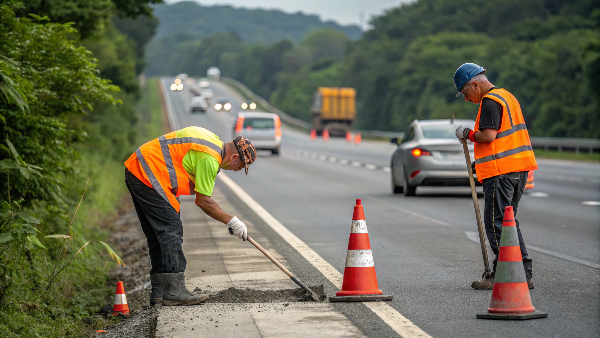
Working on or near roads is one of the riskiest jobs. Vehicles are moving fast, often in unpredictable ways. As a manufacturer, we hear from clients like Danny Cheng about the constant need for reliable hi-vis gear for construction crews, emergency responders, and utility workers. Their lives depend on being seen. A high-visibility vest achieves this by making the worker stand out against complex backgrounds. Whether it's a bright sunny day, a foggy morning, or late at night, the vest needs to perform. The fluorescent colors are crucial for daytime, grabbing attention. At night, or in tunnels, the retroreflective stripes5 are lifesavers, shining brightly when hit by headlights. It's not just about the materials; it's also about the design – ensuring 360-degree visibility. We even offer customization, like adding company logos, but always ensure the safety features aren't compromised. This is why certifications like EN ISO 204716 are so important. They give our clients peace of mind.
Think about these common roadside work scenarios:
- Highway Construction: Workers amidst fast-moving traffic.
- Utility Repairs: Often in adverse weather or at night.
- Emergency Response: Police, fire, and medical teams at accident scenes.
In each case, visibility is paramount.
Can high vis jackets make people invisible to newer car sensors?
New cars have advanced sensors. You wonder if hi-vis works with them. The good news is hi-vis helps, not hinders, these sensors.
No, high-visibility jackets do not make people invisible to newer car sensors. In fact, the bright colors can enhance detection by camera-based systems, while radar and LiDAR7 detect physical presence regardless of clothing color.
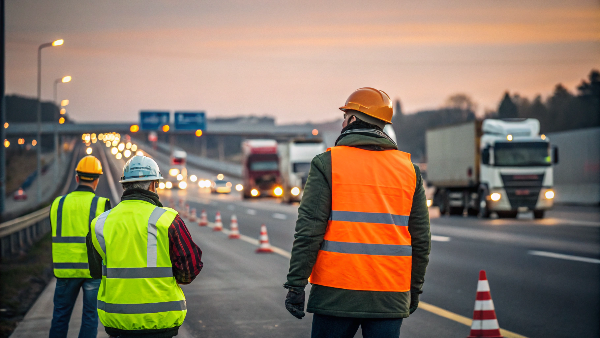
This is a question I've heard a few times, especially as cars get smarter. People worry that the special materials in hi-vis clothing might somehow "hide" them from advanced driver-assistance systems8 (ADAS). But that's not how it works. Most ADAS use a combination of cameras, radar, and LiDAR.
Cameras see visible light, much like our eyes. High-visibility clothing is designed to be extremely bright and conspicuous, so cameras are very likely to pick up someone wearing it, perhaps even better than regular clothing.
Radar systems detect objects by bouncing radio waves off them. The fabric of a hi-vis jacket, usually polyester, doesn't block radio waves. So, the radar will still detect the person.
LiDAR uses laser light. While the retroreflective tapes are designed for visible light from headlights, LiDAR detects the physical form. The bright colors or tapes won't make a person invisible to LiDAR.
The primary design of hi-vis is for human eyes, but it doesn't interfere with these sensors.
| Sensor Type | How it Works | Interaction with Hi-Vis Clothing |
|---|---|---|
| Camera | Detects visible light | Bright colors and contrast of hi-vis are easily detected. |
| Radar | Uses radio waves to detect objects | Hi-vis material does not block radar; person's body is detected. |
| LiDAR | Uses laser pulses to measure distance to objects | Detects physical form; reflective strips don't hinder detection. |
So, rest assured, hi-vis clothing continues to be a vital safety feature, even with modern vehicle technology.
What does high-visibility clothing protect you from?
You face many risks when unseen. Traffic is a big one. High-visibility clothing protects you by making sure you are always seen.
High-visibility clothing primarily protects you from being struck by vehicles or moving machinery by making you highly conspicuous to operators, especially in low light, adverse weather, or complex backgrounds.
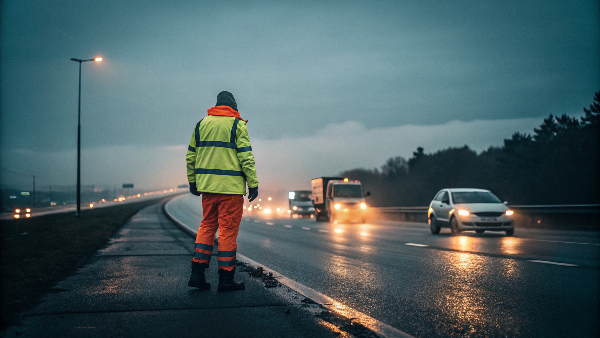
The main job of high-visibility clothing is to prevent "struck-by" incidents. These happen when a person is hit by a vehicle or moving equipment. This is a major cause of workplace fatalities and serious injuries, especially in construction, road maintenance, and logistics. But it's also a risk for any driver who has to get out of their car on a road.
Here’s how it helps:
It makes you stand out. Against a busy background, like a construction site or a highway, a person in normal clothes can blend in. Bright fluorescent yellow, orange, or red makes you pop.
It works in all light. During the day, the fluorescent colors are vibrant. At night or in dim conditions, the retroreflective stripes blaze when light hits them.
It signals "human presence." Drivers and equipment operators are conditioned to react to these colors, recognizing someone is there.
For our clients who supply these to various industries, this protection is not just a feature; it's a fundamental requirement. They trust us to ensure our garments meet the highest standards like EN ISO 20471 and ANSI/ISEA 107 because that directly translates to worker safety.
| Hazard Scenario | How Hi-Vis Protects | Impact of Not Wearing Hi-Vis |
|---|---|---|
| Roadside breakdown at night | Reflective tapes shine in headlights, alerting drivers | Driver may not see person in time |
| Construction worker near equipment | Fluorescent color stands out in daylight | Worker blends into surroundings |
| Cyclist or pedestrian in traffic | Increases visibility to all vehicle operators | Higher risk of collision |
| Emergency responder at accident scene | Ensures visibility amidst chaos and poor lighting | Can be mistaken or overlooked |
Essentially, it protects you from the danger of not being seen.
What are the benefits of hi-vis?
Being unseen is dangerous. Accidents can happen. Hi-vis clothing offers many benefits by making you highly visible to others.
The primary benefit of hi-vis clothing is significantly improved visibility, leading to fewer accidents, enhanced worker safety, and compliance with safety regulations. It also promotes a stronger safety culture.
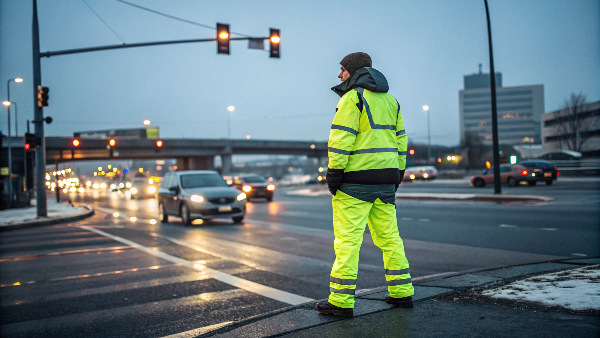
The advantages of wearing high-visibility clothing are clear and impactful. As a manufacturer, we see these benefits firsthand through the needs of our B2B clients. They are looking for more than just clothing; they are looking for safety solutions.
First, Enhanced Visibility and Accident Prevention: This is the core benefit. Being easily seen means drivers and equipment operators have more time to react, drastically reducing collisions. I remember Danny Cheng telling me about a close call one of his client's teams had before they mandated stricter hi-vis use; it was a wake-up call.
Second, Compliance with Regulations: Standards like EN ISO 20471 and ANSI/ISEA 107 are often legal requirements. Wearing compliant hi-vis ensures companies meet these obligations, avoiding fines and legal issues. Our 75+ testing devices ensure we meet these.
Third, Increased Worker Confidence and Safety Culture: When workers feel visible and protected, they can focus better on their tasks. It also fosters a stronger safety-conscious environment.
Fourth, Versatility: Modern hi-vis clothing comes in many forms – vests, jackets, trousers, coveralls – suitable for various climates and job roles, including eco-friendly options which are increasingly important.
| Benefit | Description | Importance for B2B Clients |
|---|---|---|
| Increased Safety | Drastically reduces the risk of accidents by making individuals highly visible in various conditions. | Primary concern for worker well-being |
| Regulatory Compliance | Meets legal and industry safety standards (e.g., EN ISO 20471, ANSI/ISEA 107). | Avoids penalties, ensures due diligence |
| Reduced Accident-Related Costs | Fewer accidents mean lower costs from injuries, downtime, and potential legal fees. | Improves bottom line |
| Enhanced Professional Image | Uniform, compliant hi-vis wear can project a professional and safety-conscious image for a company. | Brand reputation |
| Improved Worker Confidence | Workers feel safer and more secure, potentially leading to better focus and productivity. | Employee morale and efficiency |
These benefits make hi-vis clothing an essential investment, not an expense.
What is true about high-visibility clothing?
There's much talk about safety gear. What's really true for hi-vis? It must be bright, reflective, and meet standards.
It's true that high-visibility clothing must use specific fluorescent colors for daytime visibility and retroreflective materials for nighttime. Crucially, it must meet certified standards like EN ISO 20471 or ANSI/ISEA 107 to be effective.
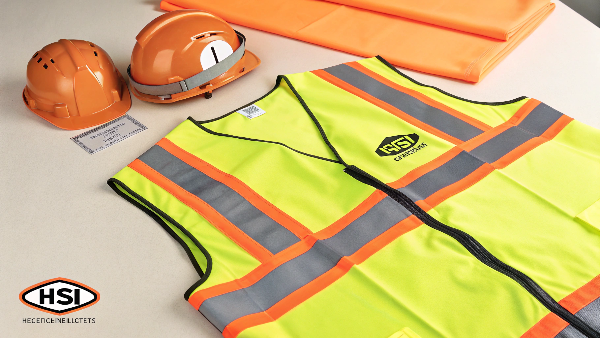
When we talk about what's true and essential for high-visibility clothing, a few key things always come up in discussions with our clients, who are often large buyers or distributors focused on safety compliance.
First, Material Science is Key: It’s not just any bright clothing. The fluorescent material is specifically engineered to be exceptionally visible in daylight. The retroreflective material has to bounce light directly back to the source with minimal scattering. We use high-quality materials that pass rigorous testing.
Second, Standards Aren't Optional, They're Essential: Self-proclaimed "hi-vis" items that don't meet standards like EN ISO 20471 (Europe) or ANSI/ISEA 107 (USA) might offer a false sense of security. These standards dictate the minimum areas of fluorescent and reflective material, their placement, and their performance (e.g., colorfastness, brightness after washing). Our facility has over 75 testing devices to ensure every batch meets these.
Third, Proper Wear and Maintenance Matter: Even the best hi-vis garment won't work if it's covered in dirt, worn out, or worn improperly. It needs to be clean and visible from all sides.
Fourth, Context Defines the Class: Standards often have different classes (e.g., Class 1, 2, 3) based on the amount of visible material. The risk level of the environment dictates the class needed. A worker on a high-speed highway needs Class 3, offering maximum visibility.
| Aspect of Hi-Vis Clothing | Truth / Key Consideration | Vissafety's Approach |
|---|---|---|
| Color Performance | Fluorescent colors (yellow, orange, red) are for daytime; specific shades are most effective. | Strict colorimetric testing to meet standard requirements. |
| Reflectivity | Retroreflective tapes must return light effectively to the source (e.g., headlights). | Use of high-grade reflective materials tested for performance. |
| Durability & Care | Must withstand washing and wear while maintaining visibility performance. | Materials selected for durability; care instructions provided. |
| Design & Coverage | Minimum surface areas and 360-degree visibility are crucial as per standards. | Designs adhere to EN ISO 20471 & ANSI/ISEA 107 class specs. |
| Not a Substitute for Caution | Hi-vis aids visibility but doesn't make wearers invincible; safe practices are still vital. | We advocate for hi-vis as part of a total safety system. |
Understanding these truths helps in selecting and using hi-vis clothing effectively.
When should you wear a high visibility vest?
You might wonder when it's needed. Is it just for work? Anytime you need to be seen near traffic, wear one.
You should wear a high-visibility vest anytime your visibility to others could be compromised, especially near moving vehicles or machinery, in low light, bad weather, or when working in complex environments.
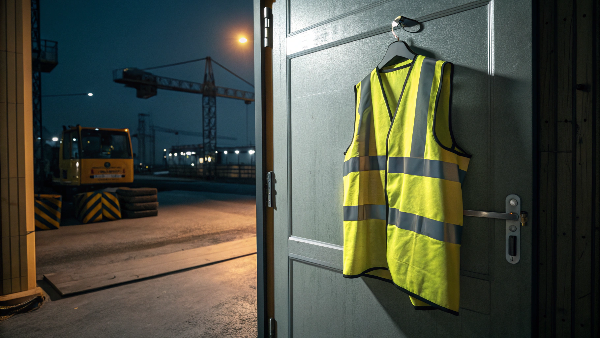
The simple answer is: wear a high-visibility vest whenever you need to be seen to stay safe, particularly around traffic or machinery. This isn't limited to professional settings.
For Workers: It's often mandatory.
- Construction sites (buildings, roads, bridges)
- Road maintenance crews
- Airport ground staff
- Warehouse and factory workers near forklifts
- Emergency responders (police, fire, medical)
- Utility workers
- Event staff and parking attendants
For Drivers and General Public: - Vehicle Breakdowns: If you have to get out of your car on any road, especially a busy one or at night. Keeping one in your car is a wise move. I always recommend this to friends and family.
- Cycling or Motorcycling: Especially at dawn, dusk, night, or in poor weather.
- Walking or Jogging: Near roads in low-light conditions.
- School children: Walking to school, particularly in winter months.
At Vissafety, while our main focus is B2B supplying companies that need to equip their workforce, the underlying principle of "be seen, be safe" applies universally. Danny Cheng, one of our long-term clients, emphasizes to his customers the importance of having these vests readily available, not just for mandated workers but as a general safety measure for anyone who might find themselves unexpectedly vulnerable near traffic.
| Situation | Why Hi-Vis is Crucial | Recommended Action |
|---|---|---|
| Working near roads/traffic | High risk of being struck by vehicles. | Wear compliant hi-vis (e.g., Class 2 or 3). |
| Vehicle breakdown on road | Vulnerable as a pedestrian in a high-risk area. | Keep & wear a hi-vis vest from your car. |
| Low light (dawn, dusk, night) | Natural visibility is significantly reduced. | Wear hi-vis with good reflective tape. |
| Poor weather (rain, fog, snow) | Drivers' visibility is impaired; you're harder to see. | Bright fluorescent and reflective hi-vis. |
| Complex environments (construction site) | Easy to blend in with machinery and materials. | Wear hi-vis to stand out clearly. |
| Cycling/Walking near traffic | Smaller profile, less visible to drivers. | Wear hi-vis clothing or accessories. |
It’s a simple habit that can make a life-or-death difference.
Conclusion
High-visibility jackets are vital for safety. They make you seen near traffic, especially during car emergencies, preventing accidents and protecting lives by ensuring visibility.
-
Explore the benefits of high-visibility jackets to understand how they enhance safety for workers and pedestrians alike. ↩
-
Learn how fluorescent colors work to enhance visibility in various lighting conditions, crucial for safety gear effectiveness. ↩
-
Discover the technology behind retroreflective tapes and their role in ensuring safety during nighttime or low-light conditions. ↩
-
Explore this link to understand how high-visibility vests enhance safety for workers on roads, reducing accident risks significantly. ↩
-
Discover how retroreflective stripes work to enhance visibility in low-light conditions, making them essential for safety gear. ↩
-
Learn about EN ISO 20471 to see how it ensures safety standards for high-visibility clothing, crucial for worker protection. ↩
-
Discover how LiDAR technology works and its effectiveness in detecting objects, including the impact of clothing on its performance. ↩
-
Learn about advanced driver-assistance systems and their role in enhancing pedestrian safety, especially with high-visibility clothing. ↩

